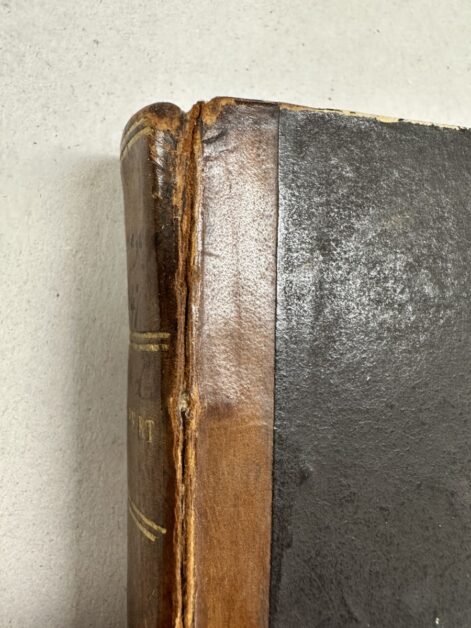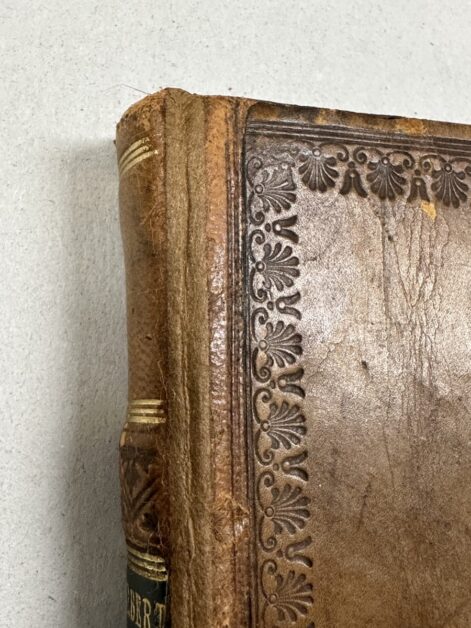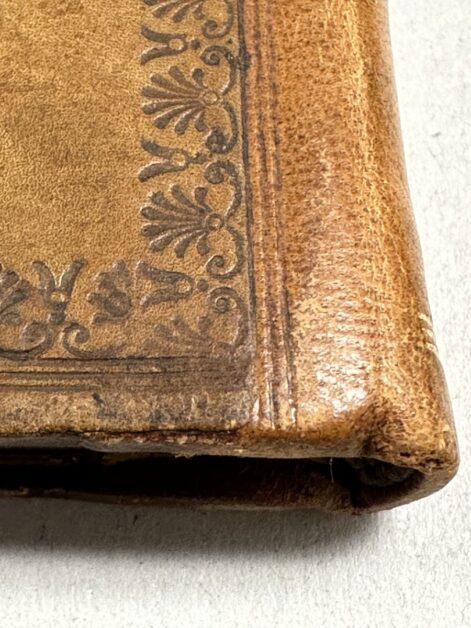by Audrey Sage
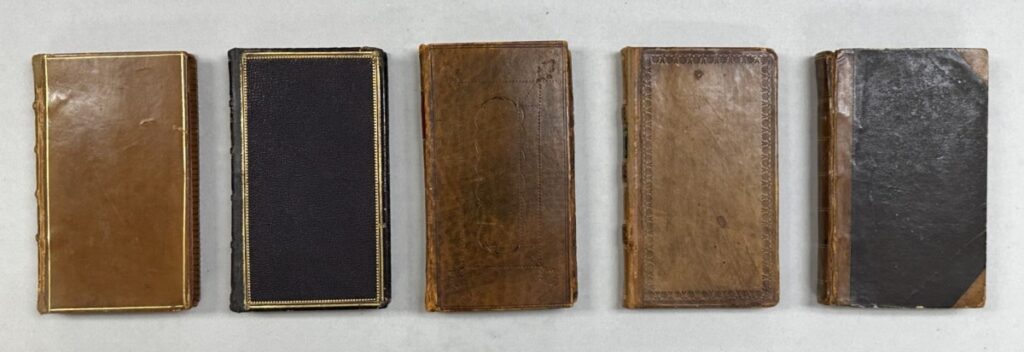
The University of North Carolina at Greensboro Libraries maintains a vast collection of the works of George Herbert (1593-1633) in their Special Collections division. George Herbert was a Welsh born English poet and orator. His work, The Temple, is considered one of the “best-known religious poems in the English language”. It is a sequence of poems that is ordered by church rituals and liturgy, and discusses theological ideas of death, judgment, and heaven, among others.
This is the largest collection of works by and about George Herbert in the United States. The Herbert
collection was begun by a faculty member in UNCG’s Department of English, Dr. Amy M.
Charles, in the 1970s. None of Herbert’s poetry had been published at the time of his death and
no manuscripts in his hand survived. Examples of all the early editions including the first edition
of Herbert’s famous collection of poems, The Temple, are in the collection. It is a
major resource for Herbert students and scholars, and it also supports the mission of The George
Herbert Society, based in UNCG’s Department of English.
Recently, five volumes of The Temple, ranging from 1633 to 1656, were brought to the conservation lab for treatment. In the course of teaching and research many volumes from our collections are utilized, referenced and handled as individuals access the materials during their journey in the search for knowledge and understanding.
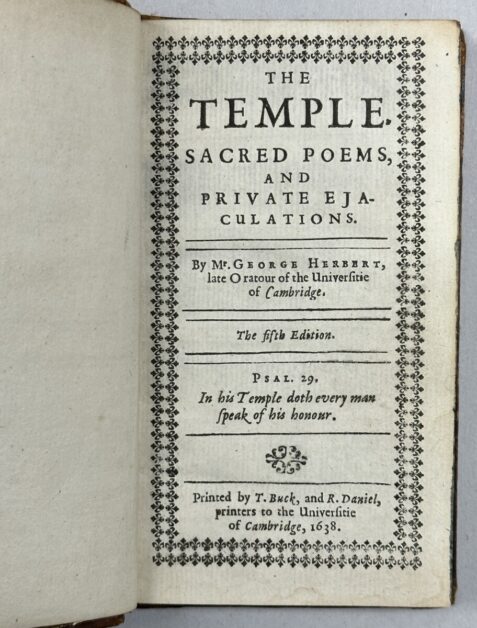

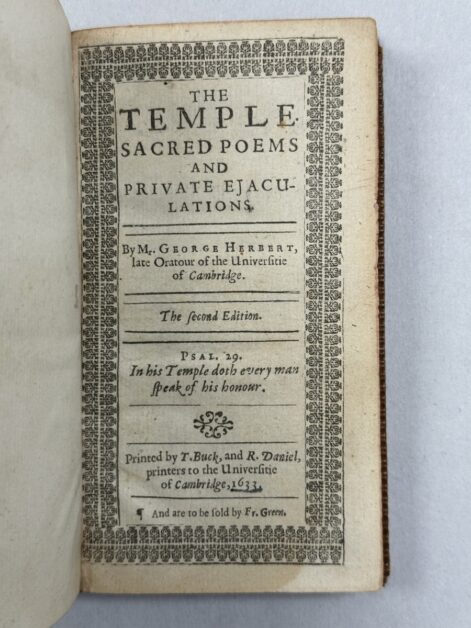
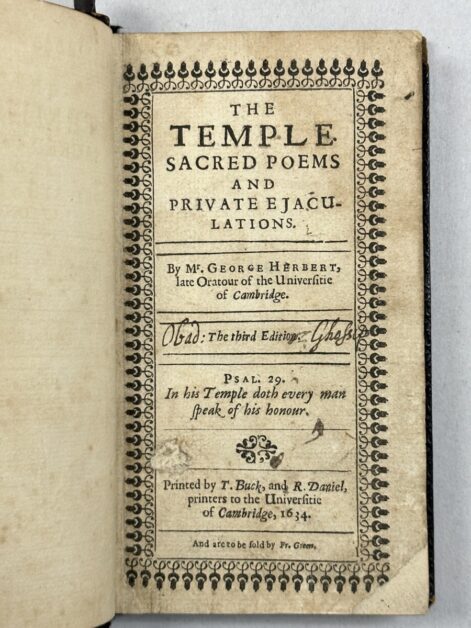
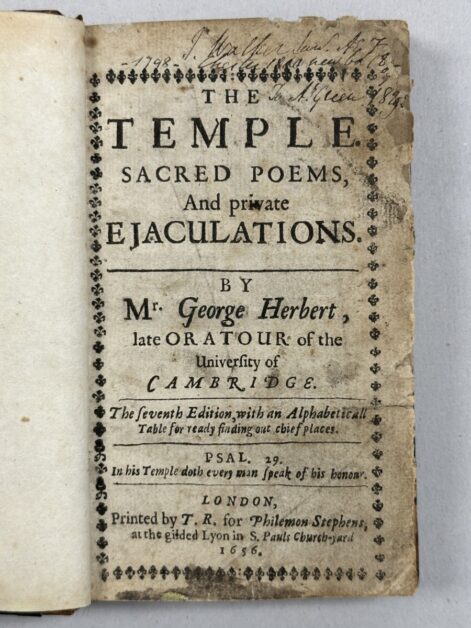
Materials are cared for with reverence and respect, yet, inevitably, wear and strain will occur. It is my observation that particular parts of a book become more vulnerable and subject to damage, more than others. Specifically, the front hinge receives much more movement as a book opens and closes, more so than the rear cover. The corners of a book are bumped and worn down through time, the cover material wearing through and the underlying substrate exposed. During treatment, these areas can be mended, strengthening the structure of the book, allowing it to continue to be utilized, and protecting it from more drastic damage. The mends are applied archivally, giving an option for reversal if necessary.
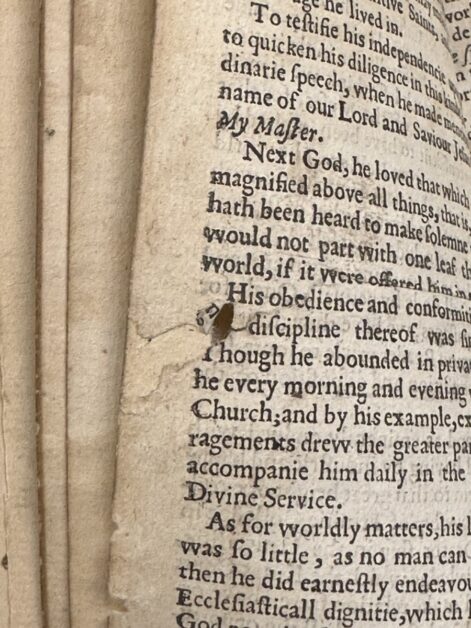
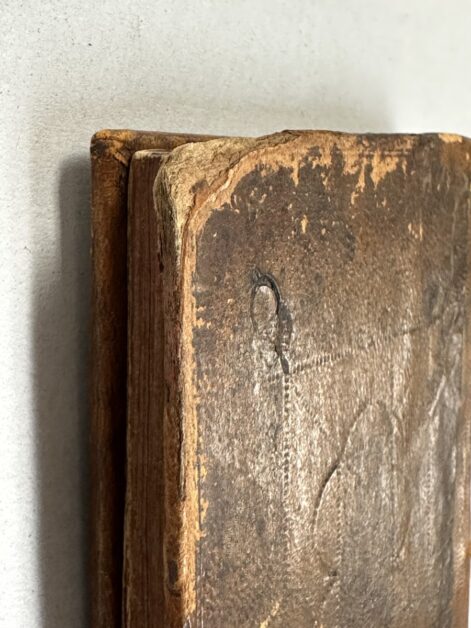
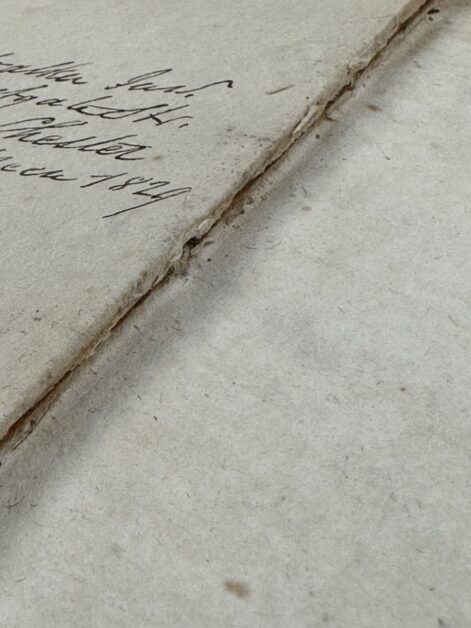
Here are three examples of worn areas that received treatment. A torn page is seen, with a previous mend apparent, but with additional tearing away that has occurred and now requires a new mend. The cover corner in the above center photo shows extreme wear and breakdown of the leather covering and underlying board. The photo on the right shows the split in the inner hinge end paper from the repeated movement as the book is opened and closed.
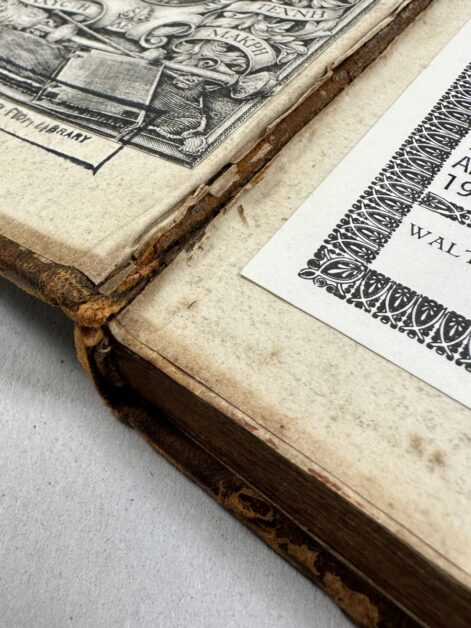
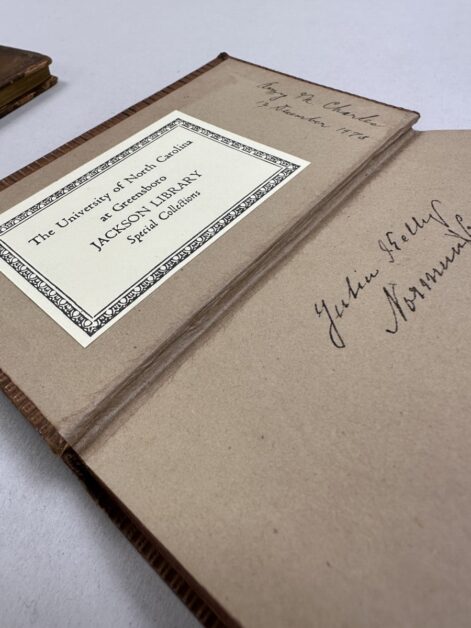
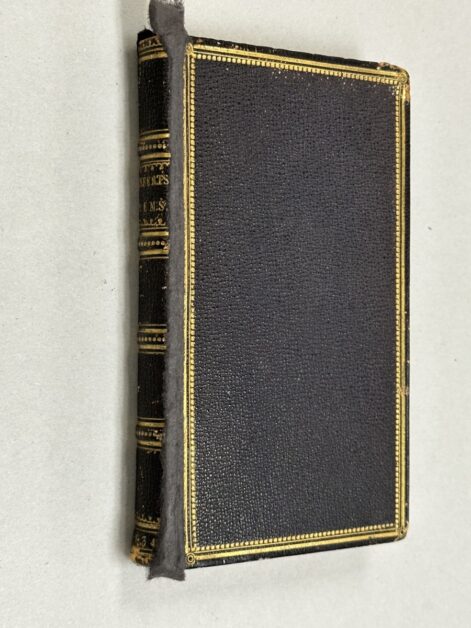
Each of these volumes contain unique notations and historical markings. This information provides special details about the journey of each book since its printing in the 1630’s, and gives fascinating insight into previous owners.

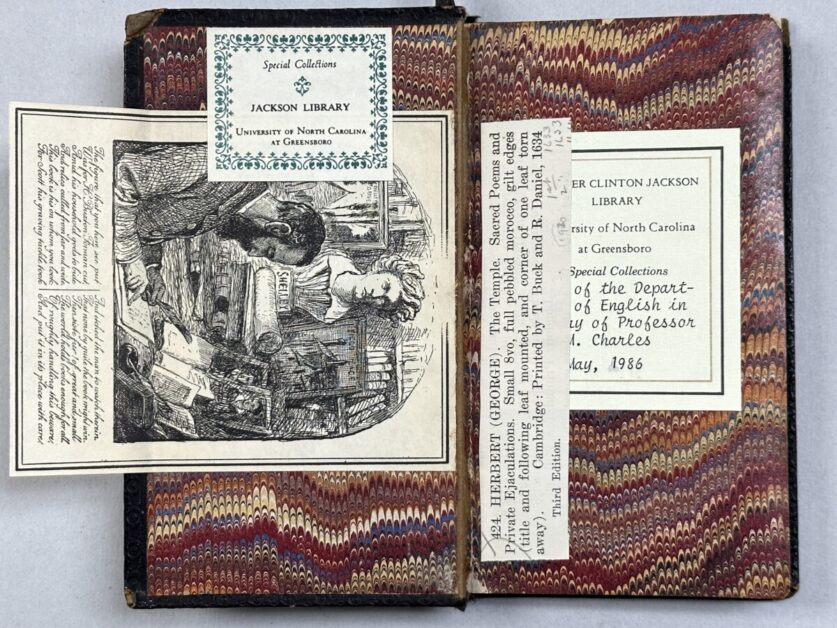
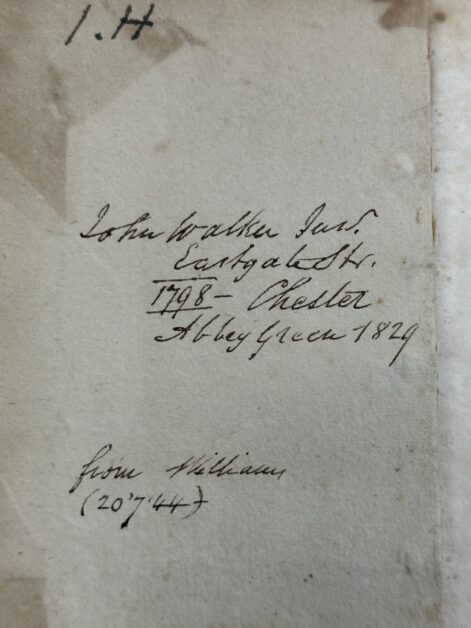
The printing of this work by George Herbert is fascinating and inspirational. Through each volume, unique typesetting is evident and creates interest and visual creativity that enhances the concepts of the text.
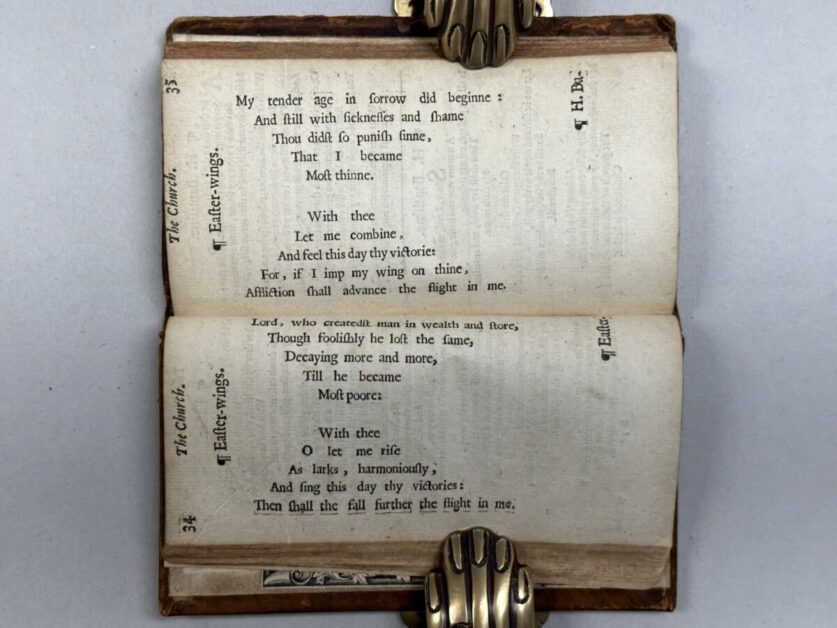
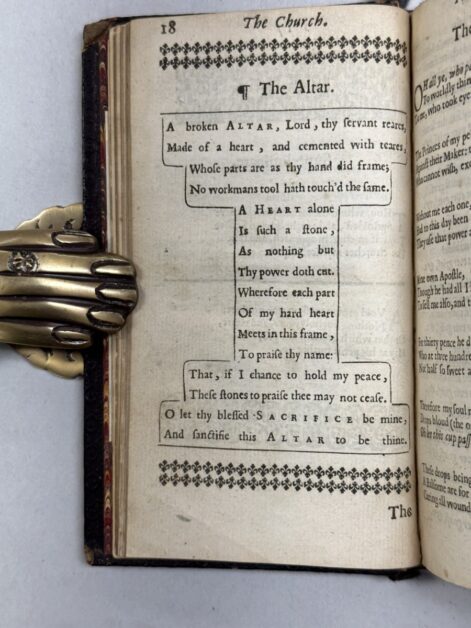
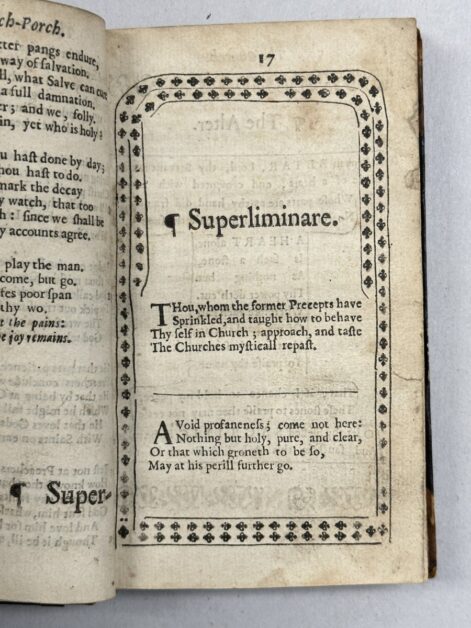
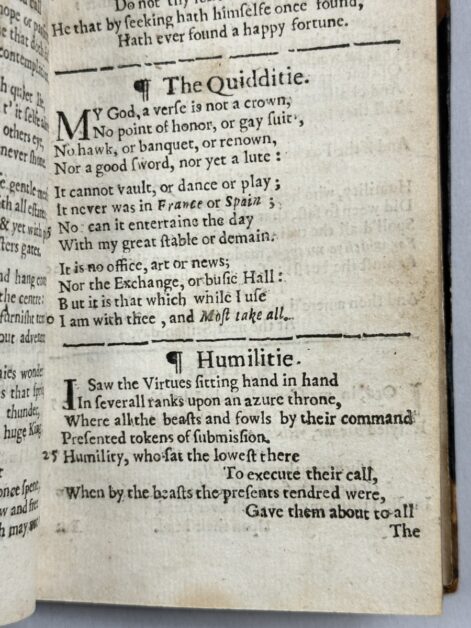
Below are images of exterior hinges of two of the volumes, showing the worn leather, and another volume, showing the japanese paper mend which will protect the worn area. The third picture shows a previous repair wherein the rear board was replaced and a new leather spine was applied. It is intriguing to find these previous treatments that have served these wonderful works through the centuries.
